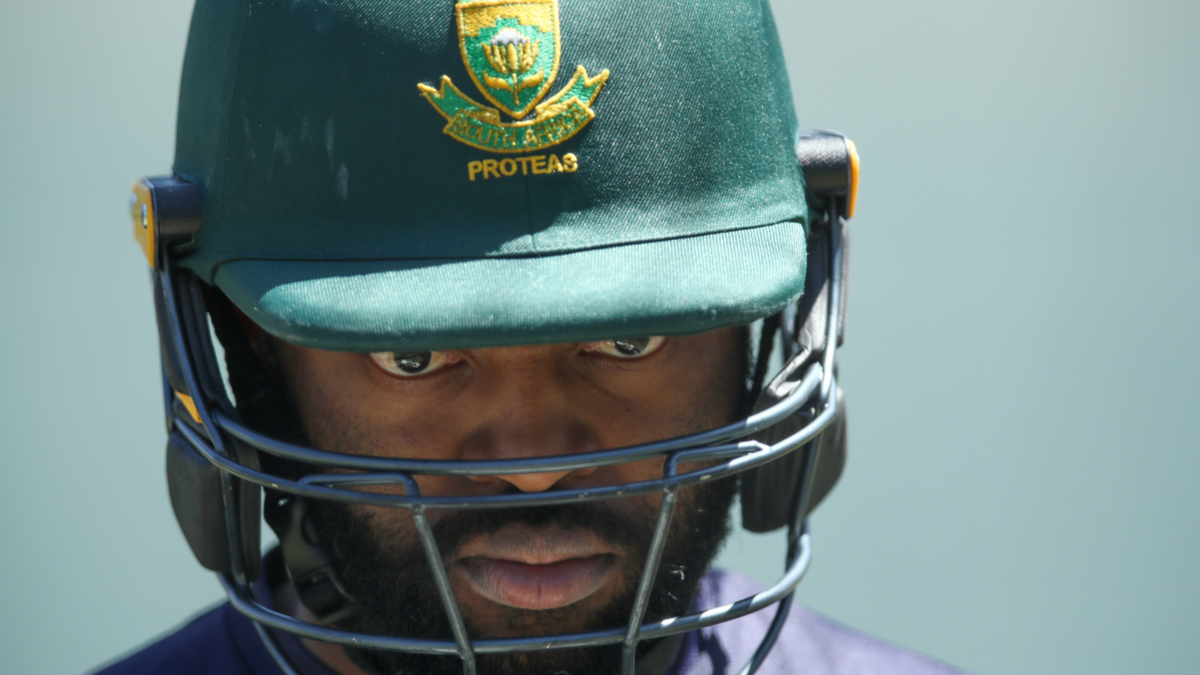
The going has got tougher for South African batters since the global lockdown, but Temba Bavuma has got going, writes Abhishek Mukherjee.
South Africa had 53 partnerships in this Australian summer, of which only 13 were worth 30 or above. Six of these (including three of the top six) featured Temba Bavuma, who finished the series with 185 runs at 37 – an unusually high number for someone whose only score in excess of fifty was 65.
But then, that has been the story of Bavuma’s batting since the global lockdown. Bavuma has scored 952 runs at 45.33 once cricket resumed. Put a 300-run cut-off, and none of his teammates average even 35. And Bavuma has done all that with only seven fifties in 26 innings, none of them a hundred.
It is not about the particular phase either. The unbeaten 102 in a high-scoring draw in Cape Town remains Bavuma’s only Test hundred. In fact, his 54 matches and 93 innings are the most by any specialist batter in Test cricket among those whose century count stands at one or fewer. Raise the bar to two hundreds, and Bavuma is on track to emulate Alistair Campbell (60 Tests, 109 innings) and Ramiz Raja (57 and 94).
He has reached 80 only three more times (only one of them during the post-lockdown period) – and that has been it. If the career average of 34.53 does not seem remarkable for someone with a lone hundred, the recent average of 45.33 without one certainly does. It certainly makes him South Africa’s best Test batter in the phase by a considerable margin.
Temba Bavuma: The man who does not fail
Let us do a breakdown of Bavuma’s numbers since the lockdown. His 26 innings have produced seven fifties. An impressive count, no doubt, but a fifty every 3.71 innings is just ahead of Dean Elgar’s once in 3.89. Yet, Elgar averages 34.51 – about 24 per cent less than Bavuma.
If one uses a cut-off of seven fifty-plus scores, Bavuma occupies 19th place in innings-per-fifty ratio (and Elgar 20th) among all countries. For perspective, six batters have got fifties at once every 2.5 innings or fewer, and five more at three or lower.
The lack of hundreds, thus, is not the only unusual aspect of Bavuma’s high-average phase: he has not got many fifties either. What makes him stand out is the number of times he has got off to starts.
In the same 26 innings, Bavuma has got out for a score under 20 only five times – in other words, once in every 5.2 innings. If one defines these innings as ‘failures’, he has ‘failed’ the least among all top-order batters who have batted 20 times. With eight ‘failures’ in 33 innings (4.13), Marnus Labuschagne is the only other specialist batter to have maintained a rate over four.
For perspective, Joe Root has ‘failed’ once every 2.56 innings over this period (25 times in 64 innings), Steve Smith 2.58 (12 in 31), Babar Azam 3.36 (11 in 37), and Rishabh Pant 3.09 (11 in 34), and Kane Williamson 3.4 (5 in 17). Even Usman Khawaja, who has had a great run over this period, stands at 3.5 (6 in 21).
While he has not been able to convert his starts into big scores, Bavuma has undoubtedly been a pillar for South Africa of late. The fifties, or even the hundreds, have not come – but some of that has had to do with the fact that South Africa have played their cricket in more difficult conditions of late.
Since cricket resumed, a wicket has fallen every 48 balls in Test matches involving South Africa. In Test matches not featuring them, the numbers read 61. In other words, in games not involving the Proteas, every 10-wicket innings has lasted 130 balls more, which explains South Africa’s run of Test matches without a draw that eventually came to an end in Sydney. The conditions have indeed favoured the bowlers irrespective of who has batted.
Predictably, every wicket has amounted to more runs – the overall batting average in games with South Africa is 25.84, 31.74 without – in other words, every non-South Africa 40-wicket Test match has produced almost 240 runs more. South Africa’s Test matches have been dominated by the ball. South Africa has a worse batting average (25.80) than any side barring the West Indies (25.58) and Zimbabwe (23.86). And yet, they are best placed to make the World Test Championship final, should India slip up against Australia.
South Africa’s struggles have surely harmed Bavuma’s numbers too. Despite never batting long, in more than a quarter of his innings in the time period, he has found himself batting with the tail (from No.8 downwards). What might his average or hundreds tally be if he had more support?
That perhaps puts Bavuma’s performances more into perspective than anything else. He has not merely avoided ‘failure’ four out of five times in recent past; he has done that in some of the most bowler-friendly conditions around.
Perhaps we depend on that three-figure mark too much to evaluate batters.








